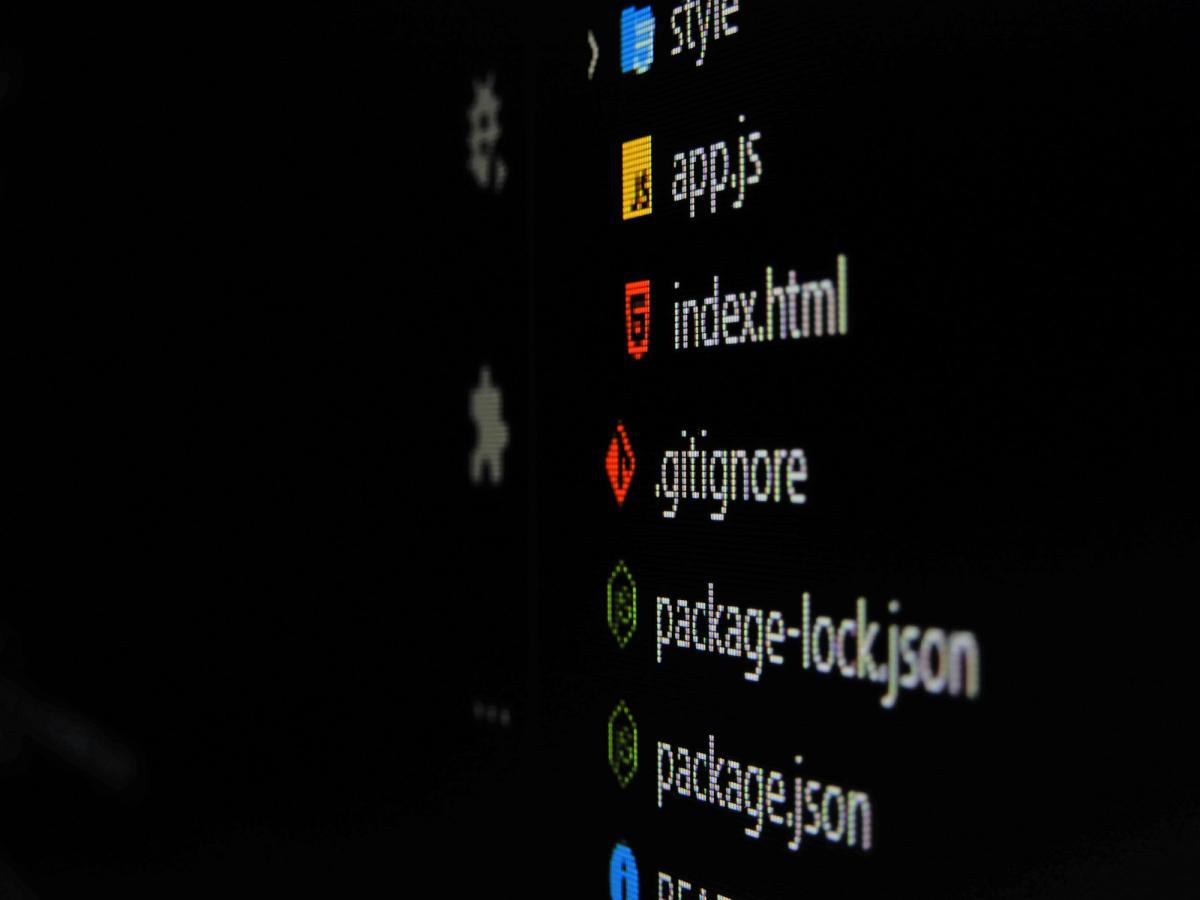What Is Model Versioning & 13 Best Tools for Your ML Workflow
Published on May 23, 2025
Get Started
Fast, scalable, pay-per-token APIs for the top frontier models like DeepSeek V3 and Llama 3.3. Fully OpenAI-compatible. Set up in minutes. Scale forever.
When a machine learning (ML) model is performing well in production, it can be easy to get complacent. But what happens when performance starts to degrade? This can happen for a variety of reasons. For instance, the data the model was trained on may have differed from the data it is encountering in production, leading to issues with accuracy. Model versioning can help you alleviate these concerns and transition to a new model more efficiently and reliably. This article will explore model versioning and its significance in machine learning production. You’ll discover how to confidently track, compare, and deploy machine learning models at scale, faster, more reliably, and fully reproducibly. We will also touch upon Monitoring ML Models in Production.
One way to streamline model versioning for your organization is to use AI inference APIs. Inference APIs allow you to deploy ML models to the cloud and serve them to applications through simple API calls. Instead of making these transitions manually, an inference API automates the process and smooths the transition between models, helping you get accurate results as quickly as possible.
What is Machine Learning Model Versioning?

Model versioning in machine learning refers to the processes that improve the organization and tracking of machine learning models. It involves making and tracking changes to models as they undergo optimization processes.
Versioning machine learning models helps you easily keep track of significant changes made to each iteration, improving your models without losing crucial information about earlier versions.
Why Is Versioning Machine Learning Models Important?
Machine learning model versioning helps to organize the iterative process of improving machine learning models. So why does it matter? Without proper organization, information on the earlier versions of a model can become lost as you work to improve the model’s performance. This can become problematic when you must reproduce an experiment or understand why a model behaves a certain way.
What Can Be Versioned in Machine Learning?
Many different components of machine learning models can be versioned. Here’s a list of some of the most essential aspects to track:
Implementation Code
The code underlying machine learning models can change significantly during optimization. Tracking the changes to this code is critical to understanding how adjustments to the implementation can affect model performance.
Data
Training data often improves significantly from its initial state during model optimization phases. This can result from engineering new features from existing ones to train our model on.
There is metadata about your training data and model to consider versioning. Metadata can change at different times without the training data itself changing, and we need to be able to track these changes through versioning.
The Model
The model itself is a product of the two previous entities. As stated in their explanations, an ML model changes at different points of the optimization phases through hyperparameter setting, model artifacts, and learning coefficients. Versioning helps record the various versions of a machine learning model.
What are the Benefits of Model Versioning?
Due to the iterative nature of ML model development or lifecycles, continuous modifications to various model components, data, or code are common. To track and manage these changes, machine learning model versioning is crucial in creating simple, iterative, and retrievable records of these modifications. Here are some key benefits:
Track and Manage ML Models with Model Versioning
Model versioning helps us keep track of implementation code and models we build, so we can properly keep track of the development cycle (very important when collaborating on a project). Each model version can have its corresponding development code and performance description (with evaluation metrics). This information reveals the dependencies that improved or reduced a model's performance.
Model Versioning for Better AI Governance and Accountability
Model versioning eases the process of model development and aids AI accountability (a gap many companies in the space have sought to fill recently) and governance and accountability. This is particularly important for neural network-based models in self-driving cars, AI-powered health applications, or stock trading applications.
Model Versioning vs. Data Versioning
Sometimes, the differences between model and data versioning are pretty straightforward. At other times, data practitioners may be confused about the differences and, in a way, use the terms interchangeably. As explained above, model versioning refers to tracking the changes and, in some cases, improvements made to a model. These changes can occur due to optimization efforts, changes in training data, and so on. See the image below for a pictorial representation of model versioning.
Tracking F1 Scores with Model and Data Versioning
This image shows that different model versions have their own F1 scores. The ML Engineer or Data Scientist must have experimented with different hyperparameters to improve the metric.
On the other hand, data versioning involves tracking changes, but this time, to a dataset. The data you work with tends to change over time due to feature engineering efforts, seasonalities, and other factors.
Why Tracking Data Versions Matters in ML Projects
This can happen when the original dataset is reprocessed, corrected, or even appended to additional data. So, you must track these changes. See the image below for a better explanation.
In the image above, we see how data changes. Each change produces a new data version, which must be stored.
Key Takeaways
Model versioning is an essential aspect of MLOps, which involves making and tracking changes to your model. The implementation code, training data, and the model should all be considered in the versioning process. Lastly, model versioning differs from data versioning; they mean quite different things.
Related Reading
Types of Model Versions

Machine learning models are complex, evolving systems that require continuous improvement to remain effective. As such, it helps to establish a clear versioning system for tracking changes made to models over time. In practice, there are three main types of version numbers used to indicate the scope of changes made to a model:
- Major versions
- Minor versions
- Patch versions
Major Versions: Significant Changes to Model Functionality
A major version indicates a significant change that could impact your model's performance or functionality. A major version update typically involves a substantial change in your model’s architecture, algorithms, or training data.
You can also introduce new features or capabilities using this. Major versions are typically denoted by incrementing the first digit in the version number. For example, a model versioned 2.4.3 would become 3.0.0 after a significant update.
Minor Versions: Small Changes That Don’t Impact Model Behavior
A minor version indicates a smaller change that does not significantly affect the model’s performance or functionality. For example, a minor version update could involve a bug fix, a small optimization, or a new feature that does not fundamentally alter the model’s behavior.
Minor versions are typically denoted by incrementing the second digit in the version number. For example, a model versioned 2.4.3 would become 2.5.0 after a minor update.
Patch Versions: Small Fixes to Specific Model Versions
A patch version indicates a small change or bug fix to a specific model version. Patch versions are typically denoted by incrementing the third digit in the version number. For example, a model versioned 2.4.3 would become 2.4.4 after a patch update.
Model Versioning Schemes: Semantic Versioning, Calendar Versioning, and More
Choosing a versioning scheme is essential for efficient collaboration in ML development. Failure to do so could result in confusion and time wastage, especially for larger projects. Here are some versioning schemes to consider when developing machine learning models:
Semantic Versioning
Semantic versioning is a widely used versioning scheme with a three-part version number consisting of major, minor, and patch versions. The version number is typically “major.minor.patch”. This scheme is often used for software libraries, frameworks, and APIs.
Calendar Versioning
Calendar versioning is a versioning scheme that uses the release date as the version number. For example, a model released on January 1st, 2022, would have a version number of 2022.01.01. This scheme is often used for data science projects that track changes over time.
Sequential Versioning
Sequential versioning is a scheme that uses a simple sequential numbering system to track versions. Each new version is assigned the following number in the sequence (e.g., 1, 2, 3, etc.). This scheme is often used for small projects or individual models.
Git Commit Hash
This scheme involves versioning based on the Git commit hash, a unique identifier for every commit made to a code repository. It allows for precise tracking of model changes and associated code changes.
For example, ‘4dfc13a’, ‘8c2fb85’, etc, for each commit made to the repository. It is commonly used for collaborative development on machine learning projects, where multiple developers may change the codebase simultaneously.
Related Reading
13 Best Model Versioning Tools for Your ML Workflow
1. Inference: Best for Cost-Efficient LLM Deployment with Built-in Versioning

Inference is built for you if you want to deploy and manage open-source LLMs at scale with total control over versioning. It delivers OpenAI-compatible serverless APIs for top-performing LLMs like Mistral, Mixtral, LLaMA, and more, offering the highest performance-to-cost ratio in the market.
But Inference goes beyond basic model hosting. It’s designed for real-world deployment, with robust model versioning, batch processing for large-scale asynchronous workloads, and specialized support for Retrieval-Augmented Generation (RAG).
Efficient Model Versioning & Inference for Scalable AI Workflows
Whether you’re versioning models for A/B testing, updating prompt templates, or managing a fleet of models in production, Inference gives you the tools to do it quickly, reliably, and affordably.
Key features:
- Built-in Versioning for Deployed Models: Track, tag, and switch between different versions of your models and configurations. Ensure reproducibility and auditability in production pipelines.
- OpenAI-Compatible Inference APIs: Plug-and-play APIs that support chat, completion, and embedding endpoints for top open-source LLMs.
- High-Throughput Batch Processing: Run massive async jobs for tasks like document summarization, extraction, or fine-tuned prompt workflows, at a fraction of the cost.
- Specialized for RAG Workflows: Inference includes native document ingestion and extraction tools explicitly designed for retrieval-augmented use cases.
- Designed for Developers & Teams: Simple setup, clear docs, and a CLI/API-first interface. Plus, get started with $10 in free credits.
Inference is the only tool on this list that combines inference serving, version control, and RAG support into one powerful platform, optimized for production. You’re not just tracking models; you’re shipping them at scale with precision and performance baked in.
2. Neptune.ai: Experiment Tracking With a Model Registry
Neptune is primarily an experiment tracker, but it also provides extensive model registry functionality. It allows you to log, visualize, compare, and query all metadata related to ML experiments and models. Integrating Neptune with your code only takes a few lines of code.
The API is flexible, and the UI is user-friendly, but it is also prepared for the high volume of logged metadata. Some of the features of Neptune:
- It supports different connection modes, such as asynchronous (default), synchronous, offline, read-only, and debug modes, for versioned metadata tracking
- It lets you track models and model versions, along with the associated metadata
- You can version model code, images, datasets, Git info, and notebooks
- It allows you to filter and sort the versioned data easily
- It lets you manage model stages using tags
- You can query and download any stored model files and metadata
- It helps your team to collaborate on experiments by providing persistent links to the UI
Neptune is an MLOps tool that allows you to experiment with hyperparameters and compare model versions based on evaluation metrics. It also stores model artifacts and metadata, versions of training data, and implementation code. Neptune has the added advantage of being able to re-run a training job (since the desired implementation code has been versioned).
3. ModelDB: Open-Source Model Versioning
ModelDB is an open-source MLOps tool for versioning implementation code, data, and model artifacts. It also lets you manage models and pipelines built in different programming languages (Python, C, Java, and so on) in their native environments and configurations. Model Versioning with ModelDB is easy through your IDE or development environment.
The first step to using Model DB is ensuring it runs in Docker. You can easily do this by cloning the repository into your local and running this:
After this, all you need to do is instantiate or set up a modelDB project with:
Version your training data:
After this, you can run experiments and store metrics, model artifacts, and hyperparameters, and you can visit the web interface to see the items you have versioned. Here is a snapshot of the web UI:
ModelDB is an open-source ML tool (signaling more support and high-quality software) that allows you to version implementation code, datasets, and model versions. It is language-agnostic, enabling you to use a variety of programming languages in their native environments.
4. DVC: Data Version Control
DVC, or Data Version Control, is an open-source MLOps tool that allows you to do version control regardless of your chosen programming language. With a git-like experience, DVC will enable you to version your training sets, model artifacts, and metadata simply, quickly, and efficiently. The storage of large files in DVC is possible through connections to Amazon S3, Google Drive, Google Cloud Storage, and more.
Part of DVC’s features and functionalities include:
- Metric Tracking through commands to list all model version branches and their associated metric values
- An ML pipeline framework for related steps
- A language-agnostic framework (regardless of the language your implementation code is in, you can still work with it)
- An ability to track failures, and so much more
The first step in using DVC is to ensure it is installed. You can achieve this by doing the following:
The next step is to prepare your implementation code, create a virtual environment with the venv module, install dependencies and requirements, and then train your model. After your model has been trained, you can now version it.
For DVC, versioning is as easy as using the DVC add git command to version your data, model, and related stuff. Here is a sample code that shows how to use this command:
DVC offers a git-like experience in versioning ML models. With this tool, you can track evaluation metrics, develop a pipeline/ framework for necessary preprocessing and training steps, and track failures.
5. MLflow: Open-Source Model Versioning
MLflow is an open-source project that allows Machine Learning Engineers to manage the ML lifecycle. Like other platforms, MLflow will enable you to version data and models and repackage code for reproducible runs. The platform integrates well with several ML libraries and tools, such as:
- TensorFlow
- PyTorch
- XGBoost
- Apache Spark
MLflow offers four distinct capabilities:
MLflow Tracking
Track experiments by logging parameters, metrics, versions of code, and output files. Log and query experiments through Python, JAVA APIs, and so on.
MLflow Projects
Organize implementation code in a reproducible way, following coding conventions. With this, you can rerun your code.
MLflow Models
Package ML models in a standardized way. With this, your models can be used or interacted with through the REST API. Batch prediction is also possible with Apache Spark.
Model Registry
Here, you can version your models and have a model lineage that depicts the model’s development life cycle. Versioning your model is relatively easy with MLflow. You must have registered the first version of the model.
See below for the associated UI.
Here you can register the name of your model and upload related metadata and documentation of how the model works. Registering a model version is similarly possible and straightforward on the same page. When you click Register model, you can indicate the model your new version belongs to through a drop-down menu. See the UI below for more explanation.
MLflow is one of the top MLOps tools for model versioning. With ML Flow, you can log experiments, organize implementation code reproducibly, and develop a model lineage (model development history) through model version registrations.
6. Pachyderm: Data Versioning for Machine Learning
Pachyderm is a data and model versioning platform that helps data scientists and Machine Learning engineers store different versions of training data orderly. It offers traceability through the different changes your data undergoes. This tool works on four checkpoints in the ML workflow:
- Data preparation
- Experimentation (training your model with varying versions of the data, setting different hyperparameters, and ascertaining suitable metrics)
- Training
- Deployment into production
Data preparation with Pachyderm involves ingestion from data sources, processing and transformations, model training, and serving.
Centralized Data Versioning and Transformation on Kubernetes
With Pachyderm, you can store all your data in a single location, organize updated versions of your data, run data transformation jobs (which must run in a Docker), and keep versions of your data.
Pachyderm runs on top of Kubernetes clusters and stores data and artifacts on Amazon S3.
Installing and initializing Pachyderm starts with some dependencies/requirements that must be satisfied. The first is to add the Homebrew tap, which allows you to tap into different repositories. You can do this in your terminal with the following lines of code:
After this, you install components locally and deploy Pachyderm over a Kubernetes cluster:
You can create repositories in Pachyderm to store code and model artifacts with the following lines of code:
- pachctl create-repo iris
Committing files into this repository is as simple as this:
pachctl put-file iris master /raw/iris 1.csv -f data/raw/iris_1.csv
Key Takeaways
Pachyderm allows you to store different versions of your training data and models in order. You can also run experiments and store artifacts on Amazon S3.
7. Polyaxon: A Scalable Machine Learning Platform
Polyaxon is a platform that provides machine learning packages and algorithms for scalable and reproducible functionalities. It boasts of running all machine learning and deep learning libraries, such as TensorFlow, Scikit-Learn, and so on, allowing you to push ideas efficiently into production.
Polyaxon offers experimentation, model registration, management, and automation capabilities regarding model versioning. The first step to using Polyaxon for model versioning is installation. This is possible with this line of code:
- $ pip install -U polyaxon
Experimentation, Training, and Performance Visualization Made Easy
Experimenting with Polyaxon allows you to pre-process training data and train your models, run performance analytics to visualize metrics and performance, and run notebooks and tensorboards. With an easy-to-use interface, Polyaxon allows you to visualize evaluation and performance metrics like so:
Key Takeaways
Polyaxon is an MLOps tool you should have in your arsenal. It can run major ML Libraries and packages like Tensorflow and Sci-kit Learn. You can also track and visualize evaluation metrics.
8. Git: The Most Widely Used Version Control System
Git is the most widely used version control system for tracking changes in code, including machine learning projects. It allows teams to collaborate on code, manage project history, and ensure reproducibility. Git works well with popular platforms like GitHub, GitLab, and Bitbucket.
Top features:
- Distributed version control system
- Branching and merging for collaboration
- Easy integration with CI/CD pipelines
- Tracks all types of files, including ML code
Pros:
- Free and open-source
- Large community support
- Works across operating systems
Cons:
- Steep learning curve for beginners
- Not specialized for large datasets or ML-specific needs
9. Kubeflow: The Machine Learning Toolkit for Kubernetes
Kubeflow is an open-source platform for deploying, scaling, and managing ML workflows on Kubernetes. It simplifies the process of running ML pipelines at scale and ensures reproducibility across teams
Top features:
- End-to-end ML pipeline management
- Native Kubernetes integration
- Support for Jupyter Notebooks and TensorFlow
- Distributed training and hyperparameter tuning
Pros:
- Excellent for large-scale deployments
- Open-source with active community support
- Works well with cloud-native tools
Cons:
- Steep learning curve
- Requires Kubernetes knowledge
10. CML (Continuous Machine Learning) Tool
CML is an open-source tool integrates machine learning workflows into CI/CD pipelines. Developed by the creators of DVC, CML helps automate model training, evaluation, and reporting directly within version control systems like GitHub and GitLab.
Top features:
- Seamless integration with CI/CD pipelines
- Automated reporting and visualization
- Support for cloud and on-premise environments
- Works with Git-based workflows
Pros:
- Simplifies CI/CD for ML projects
- Compatible with popular cloud platforms
- Open-source and easy to adopt
Cons:
- Limited to CI/CD use cases
- Requires understanding of Git and CI/CD workflows
11. Comet.ml: The Cloud-Based Experiment Management Tool
Comet.ml is a cloud-based tool for experiment tracking, model optimization, and collaboration. It helps data scientists manage and visualize experiments, ensuring reproducibility and transparency. Comet.ml supports integration with major ML frameworks and platforms.
Top features:
- Real-time experiment tracking
- Model versioning and comparison tools
- Rich visualization dashboards
- Collaboration features for teams
Pros:
- User-friendly interface
- Strong focus on collaboration
- Supports various ML frameworks
Cons:
- Advanced features may require paid plans
- Limited offline capabilities
12. Guild.ai: A Lightweight Tool for Managing ML Experiments
Guild.ai is a lightweight tool designed for managing experiments and model versions in ML workflows. It tracks changes in code, data, and configurations, helping teams build reproducible projects.
Top features:
- Automated experiment tracking
- Lightweight and easy to set up
- Compatibility with major ML frameworks
- Command-line interface for quick usage
Pros:
- Simple and developer-friendly
- Effective for tracking without heavy infrastructure
- Open-source and actively maintained
Cons:
- Limited GUI support
- Fewer collaboration features compared to competitors
13. LakeFS: Version Control for Data Lakes
LakeFS is an open-source version control system that runs over the data lake and uses Git-like semantics. Data scientists can use it to train models in isolation, run parallel experiments, and achieve full data reproducibility. A machine learning model is, in essence, a binary file.
LakeFS can easily manage and version an ML model since it supports any data format. Using lakeFS’s integration with Git, you can manage the versions of your model, the data used to train it, and the code together.
Sync Local Work with lakeFS Using lakectl or lakeFS Mount
Suppose most of your day-to-day work is local. In that case, you can use lakectl local to sync local directories with lakeFS paths or lakeFS Mount, which mounts a path to a local directory while keeping consistency and providing performance.
Why Use Model Versioning Tools for Your ML Workflow?

Model versioning tools are designed to help data scientists and machine learning (ML) engineers manage and organize their ML models. These tools allow you to track changes to your models over time, collaborate with team members, and ensure reproducibility.
In an ML project, a model versioning tool is typically used to track the different versions of a model developed, along with any changes made to the model and its associated data and code. This allows you to keep track of the development process, compare different model versions, and reproduce results.
Model Versioning Tools for Precision and Repeatability
With features like version control, model comparison, and collaboration, model versioning technologies often offer a user-friendly interface for managing models. Additionally, they can include APIs for logging model training data and parameters, making monitoring and assessing your models' performance over time simple.
Overall, model versioning tools are crucial to any ML workflow because they help ensure the precision and repeatability of ML models.
Reproducibility: Why It Matters, and How Versioning Helps
ML models are built upon various dependencies such as:
- Datasets
- Preprocessing code
- Training algorithms
- Hyperparameters
With model versioning tools, you can track the exact versions of these dependencies used to create a particular model. This ensures that future results can be reproduced, even if the underlying tools or libraries change.
Collaboration: Keeping Teamwork Smooth and Efficient
In ML projects, multiple team members often work together, making model changes, experimenting with different approaches, or working on various components simultaneously.
Model versioning tools enable seamless collaboration by allowing team members to track each other's work, merge changes, and revert to previous versions if needed. They provide a centralized repository for models, facilitating efficient teamwork.
Experiment Tracking: Keeping a Close Eye on Model Performance
ML workflows involve multiple experiments with different model architectures, hyperparameters, and data configurations. Model versioning tools enable you to log and track these experiments, recording the specific settings and results. This makes it easier to compare the performance of different models and understand what factors contribute to success or failure.
Model Deployment and Monitoring: Keeping Track of Changes After Production
Once a model is deployed, it requires regular updates, bug fixes, and enhancements. Model versioning tools make it easier to manage the deployment pipeline by tracking the versions of models in production. If an issue arises, you can quickly identify the specific model version causing the problem and roll back to a previous stable version.
Auditing and Compliance: Why a History of Changes Is Crucial
In regulated industries or research environments, it's crucial to maintain a complete audit trail of model development and deployment. Model versioning tools provide a comprehensive history of changes, making it easier to trace the evolution of models, understand the decision-making process, and comply with regulatory requirements.
Documentation and Communication: Making Sure Knowledge Is Shared
Model versioning tools enable you to attach documentation, comments, and annotations to specific model versions. This facilitates knowledge sharing, allowing team members to communicate ideas, document insights, and share best practices. It also helps new team members understand the context and history of the models they are working on.
Easy Rollbacks and Bug Fixing: Isolating Changes for Quicker Solutions
Changes to a model or its dependencies can sometimes introduce bugs or unforeseen issues. Model versioning tools enable you to roll back to a previous stable version quickly. This helps diagnose and fix problems by isolating the changes made since the last known working version.
Best Practices for Machine Learning Model Versioning
It’s key to develop your model versioning strategy early on. First, decide which version control system you’ll use. You may be tempted to manage your machine learning models with a general-purpose version management system like Git.
This can quickly become time-consuming and inefficient because ML models are frequently big, binary, and dynamic files that are not well suited to Git’s text-based and static approach. Instead, use a version control system specifically intended for ML models.
Key to Effective Model Versioning
Another key step in your strategy is establishing a consistent naming convention. One issue of versioning ML models is keeping track of the many versions and their properties. A viable solution to this problem is to employ a consistent naming standard that reflects the model’s purpose, design, data, and performance.
Automating the Versioning Process for Scalability
Automation, which occurs through CI/CD pipelines, ensures that the version control stages are seamlessly integrated into the ML workflow. It reduces the likelihood of human errors and increases effectiveness. Use tools that automatically track and version models and associated metadata, guaranteeing that each model version is reproducible and traceable.
You can also configure the CI pipelines to automatically initiate the model training process whenever changes occur in the codebase or data (for example, if you use git, every push can activate the pipeline). Ensure you have automatic monitoring to check the model’s performance after deployment; relying entirely on manual inspections is bound to become time-consuming.
Integrating Versioning with Experimentation Workflows
Document experiments and changes, including the reasons for changes and the details of the experiments, to enable smooth collaboration. You can incorporate automatic document production into CI/CD pipelines to improve the documentation process, ensuring that documentation is constantly updated with the most recent code changes.
Don’t forget to provide descriptive comments throughout the code to explain sophisticated logic, algorithms, or any complex decisions made during development and deployment.
Leveraging Versioning for Compliance and Auditing
Model versioning and governance allow you to recreate and compare the performance of various versions of your models, which helps in optimization and debugging. They also enable you to roll back to prior versions in case of mistakes or malfunctions, boosting your reliability and availability. Finally, they help document and audit your models’ history and lineage.
Governing your models ensures they meet corporate and legal requirements and expectations, including accuracy, fairness, robustness, privacy, and ethics. Depending on your context and aims, you can regulate your models using various processes and methods.
Model Governance Through Review, Testing, and Monitoring
For example, you can use a code review process to evaluate and approve your models’ code and logic before deploying them. You can also use a testing and validation procedure to validate and assess the findings and behavior of your models in various scenarios and contexts.
Another approach is to employ a monitoring and feedback method, in which you track and assess the performance and impact of your models in production while also collecting and incorporating user and customer input.
Related Reading
Start Building with $10 in Free API Credits Today!
Inference is using a trained machine learning model to make predictions about new data. This step comes after training and allows a model to be useful in practice.
For example, if you trained a model to recognize pictures of cats, inference is the step that would allow you to upload a new image of a cat and get predictions about it. Inference can happen on different hardware setups, including cloud instances and edge devices.
Start building with $10 in free API credits and experience state-of-the-art language models that balance cost-efficiency with high performance.





